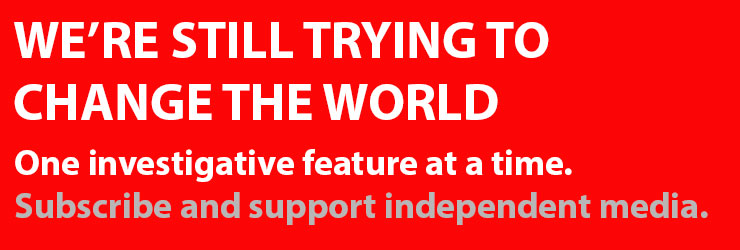In the second of a three part series on the psychological warfare that pervades our election campaigns, New Matilda columnist Dr Lissa Johnson explores the media’s ‘false balance’, and how to see through it.
We’re almost a week into the federal election campaign. To kick things into second gear, Turnbull and Shorten faced off in front of 100 undecided voters on Friday.
Centre stage in the debate and its coverage was the political climate. Shorten wins audience vote. Turnbull misreads mood.
The earth’s climate was of less interest.
Both candidates stayed on-message: voodoo economics or growth-through-tax-cuts versus quality education and healthcare.
At this unusual time in human history, it is business-as-usual on the campaign trail.
In part 1 of this series I argued that were voting a rational endeavour, climate change would be at the forefront of the election agenda, election coverage, and voters’ minds. Instead, half of Australian voters are willing to vote for a political party whose climate policies endanger life on Earth.
To explain this state of affairs, I examined the role of emotion in voting and political cognition. I began by summarising findings that glimpsing headshots of political candidates, with no knowledge of their policies, is enough to predict election outcomes with 70 per cent accuracy. I also reviewed evidence that voters use similar cues as children to evaluate political candidates’ competency.
I then explored the psychological underpinnings of these phenomena, namely that human beings feel first and think later. Such emotion-driven processing occurs at an unconscious and automatic level, where the vast majority of human information processing occurs. In this subterranean realm, feelings rather than logic direct the political decision-making flow.
To understand electoral self-destructiveness further, I reviewed research examining unconscious media influences on voting behaviour, such as presenters’ nonverbal demeanour towards candidates, ranking of news items, and the balance of positive and negative stories across news organisations.
I traced evidence linking these subtleties in media content to real-world voting patterns, including voting for Ronald Reagan, and discussed implications for the Australian political landscape.
At the next election, I asked, with power over life on Earth in their hands, will Australian voters choose the headshot of whoever won the popularity contest of the day, or will they choose life on Earth?

While face-value voting may decide the answer, being a force strong enough to swing elections, does it fully explain Australian voters sleepwalking into environmental catastrophe?
The media influences discussed in part 1 primarily concern subtleties in content and placement, which undoubtedly do shape voters’ support for candidates.
But is there more going on?
In the bigger picture of media influence, could other forces be at work?
The ABC example
In January of this year New Matilda broke a story that opened an illuminating window into opinion-shaping processes in the media, and the machinations behind them.
In a special investigation titled False Balance, New Matilda published transcripts of a secretly recorded conversation between ABC technology journalist Nick Ross and his boss, the Head of ABCs Current Affairs division, Bruce Belsham.
The conversation occurred during a meeting in 2013 concerning Ross’s coverage of the National Broadband Network (NBN), an important election issue at the time. Ross had written a detailed investigative piece critical of the Coalition’s NBN strategy.
Ross was directed in the meeting to withhold his article on the Coalition’s NBN policy, and first publish a story critical of Labor, as “insurance” against the “Turnbull camp” and ABC “superiors” on “the Fourteenth Floor”. Belsham was concerned that his superiors would come down on Ross and Belsham “like a tonne of bricks” if Ross’s piece ran.
Turnbull had previously tweeted his displeasure at the ABC’s NBN coverage, including a Tweet on “the bias and ignorance of the ABC’s Nick Ross”. Turnbull had also contacted ABC management to relay his displeasure.
In the meeting with Belsham, when Ross objected that a “tough” piece on Labor’s policy didn’t fit the facts as he knew them, Belsham said “I’m not talking morality here, I’m talking about realpolitik”
Later, defending the decision in Senate Estimates, ABC Chief Executive at the time, Mark Scott, argued that Ross’s piece was withheld because it “didn’t canvass all the ‘principal, relevant viewpoints’” (pro- and con- Coalition).
Oh, OK. Well fair enough. That’s what it’s all about, right? Impartiality and balance? To prevent bias?
However, one of the many weaknesses of this defense, which goes to the heart of structural problems with dominant media conventions, is that it rests on a fantasy of human cognition. Including a fantasy of media bias and objectivity.
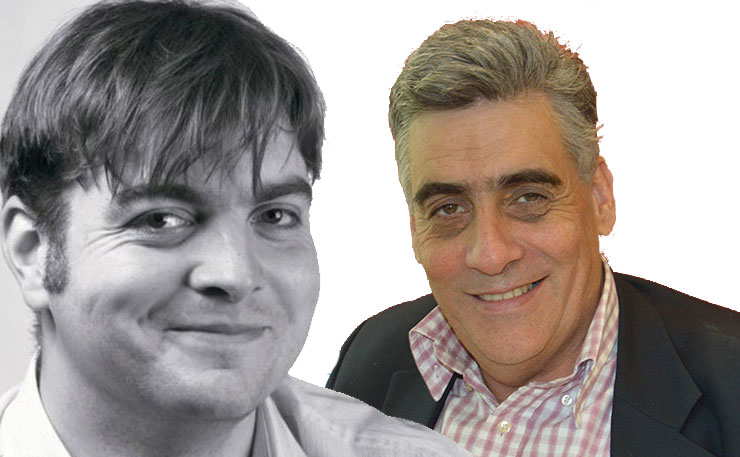
The fantasy is that a logical human information processor extracts facts on both sides of an argument, weighs them against one another, and comes to a rational judgement.
If the judgement is biased, it is either the fault of the judgement itself or the argument, not the journalism. By not taking sides, journalism places itself outside the decision-making equation, in the position of a neutral observer.
Makes sense.
In reality, however, as Political Scientists Milton Lodge and Charles S Taber explain in their book The Rationalising Voter, such ‘cold evaluations’ in human cognition are ‘exceedingly rare’. Lodge and Taber review extensive evidence that the human mind simply does not arrive at judgements based on a ‘moral algebra’ in which pros and cons are rationally weighed against one another.
The real forces shaping opinion, free to sneak in undetected on either side of a ‘balanced’ debate, emanate from unconscious and unnoticed influences such as those described in part 1. Influences such as appearance, likeability, subtleties in presenters’ demeanour, subtleties of language, subtleties of the order of arguments, how interviewers treat interviewees, and even tone of voice.
To pretend that ‘balancing’ air time circumvents these subterranean influences, and enables ‘moral algebra’, is journalistic pantomime. A pantomime that we will no doubt witness repeatedly during the current election campaign.
Moreover, without investigative background to assist people to understand and evaluate each side of an argument (context, chronology, explanation of concepts, analysis of implications), merely presenting both sides serves primarily to confuse.
This is particularly true of complex topics requiring specialised areas of expertise such as science, technology and economics.
National Broadband policy is a case in point. As is economic policy at election time.
As discussed in part 1, it is precisely when people are confused or overloaded that their implicit, automatic, unconscious systems are wired to take over, and take shortcuts, rendering them more, rather than less, susceptible to unconscious influences.
In other words, the ‘balance’ model of journalism encourages, rather than protects against, suggestibility and bias.
Even worse, insisting on ‘balancing’ pro- and con- positions speaks the language of the unconscious mind. To summarise part 1, our implicit, unconscious information processing systems evaluate issues, candidates and parties by tagging them with positive and negative feelings, or ‘affective tags’.
The more positively or negatively emotionally tagged an issue, the more positive or negative our opinions on the subject. When such tags line up with reality they serve us well.
When they are forced into an artificial state of balance (pro-con, anti-con) by journalistic convention rather than reality, we are misled.
The ABC NBN coverage brought this vividly to life, in that real information, gathered by extensive real world investigation, with real experts offering real analysis, was withheld in order to maintain the pantomime of balance. Journalistic convention, and the will of the ‘Turnbull Camp’ trumped reality in voters’ unconscious decision-making minds.
All in the lead-up to an election.
The ABC False Balance story is germane to our current election and its coverage not only because it illustrates the machinations of ‘real politik’ behind election reporting, but because it illustrates the psychologically manipulative power of news conventions themselves.
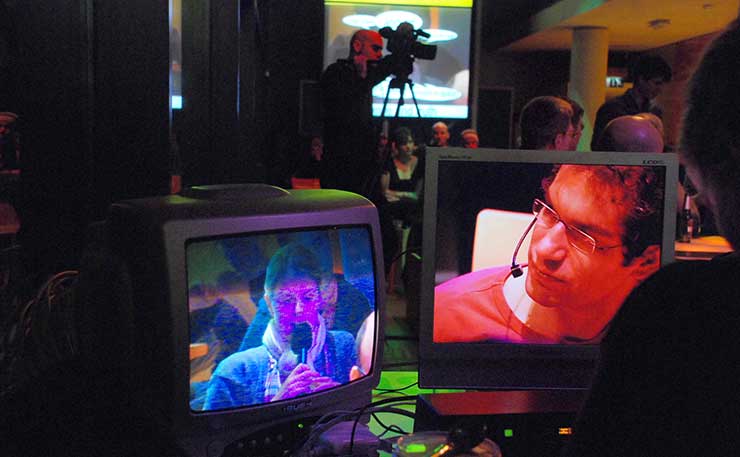
What Scott neglected to mention in Senate Estimates is that the journalistic tradition of canvassing opposing viewpoints (balance) is but one of many news traditions available to editors and their reporters. In fact, it is among the least informative and democratic of news traditions.
Professor of Communication, Simon Cottle and his colleague Julian Matthews explore this issue in a paper titled U.S. TV News and Communicative Architecture: Between Manufacturing Consent and Mediating Democracy.
They argue that “the established ‘communicative structures’ [journalistic conventions]of TV news, generally overlooked and under-theorized in the research field, are deeply implicated in both processes of manufacturing consent and mediating democracy”.
In the case of ABC NBN coverage, to manufacture ‘balance’ was to manufacture consent to the Coalition’s NBN strategy.
‘Manufacturing consent’ was a concept put forward in 1988 by Noam Chomsky and Edward S Herman (borrowed from Walter Lippmann) to describe the propaganda functions of mainstream media. In short, as Cottle and Matthews explain, this view sees media as “dependent on powerful sources and advertisers, and working in the service of the established system and its political elites”.
Elites such as “The Fourteenth Floor” and “The Turnbull camp”.
Cottle and Matthews argue that ‘communicative structures’ or ‘communicative architectures’, (ie. ‘ways of organizing and telling news stories’), are an under-studied and under-recognised instrument for the manufacture of consent.
To offer a framework for studying these communicative architectures, Cottle and Matthews identified 10 different communicative structures, and examined their frequency in mainstream news outlets in the US. By far the most common was what they called the classic reporting structure (57.2 per cent of news items). This involves brief updates on stories in the news cycle, which, they say “deliver at best thin accounts of events”.
The next most common (18 per cent) was the ‘balance’ structure, which they called contest and contention, in which “opposing views and arguments [are]generally given approximately equal weight or representation.”
They noted that within this structure, rarely more than two perspectives are presented.
Among the most informative but least common news architecture was what they called expose/investigation.
Cottle and Matthews said, “The exposé/investigation frame conforms to the idealized liberal democratic role of journalism as public watchdog. Here journalists actively set out to investigate, expose, and uncover information and practices that would not otherwise be revealed within the public domain. This frame includes, therefore, traditional investigative journalism based on intensive research and exploratory fact-finding as well as exposé journalism of public or private affairs.”
Nick Ross’s investigation of the NBN comes to mind. As does New Matilda’s expose of ABC pressure on Ross to withhold his investigation, so as to appease the Turnbull camp.
Cottle and Matthews note, “The limited use of the expose/investigation frame by [news organisations], across the board, further indicates a decline in the traditional democratic “watchdog” role of critically scrutinizing the activities of the state or other power holders in society — a finding in keeping with trends in TV news around the world.”
Don’t we know it. At least the ABC is en trend.
In Cottle and Matthews’ research, expose/investigation structures accounted for just 0.4 per cent of news content.
Zero point four.
If only 0.4 per cent of our election coverage is investigative, or if even 10 times that amount is investigative, our politicians will find it easy to confuse and overwhelm voters with claims and counter claims.
This speaks to Cottle and Matthews’ main point. By sidelining communicative architectures that facilitate democracy and an informed electorate, dominant journalistic conventions are key components of propaganda, or the manufacture of consent.
Consistent with this, as well as being dominant conventions in news and election coverage, the conflict and contest structures (balance) are used in ‘psychological operations’ or ‘psy-ops’, otherwise known as ‘perception management’, ‘information operations’, ‘propaganda’ ‘information warfare’ or, the contemporary preferred term, ‘strategic communication’.
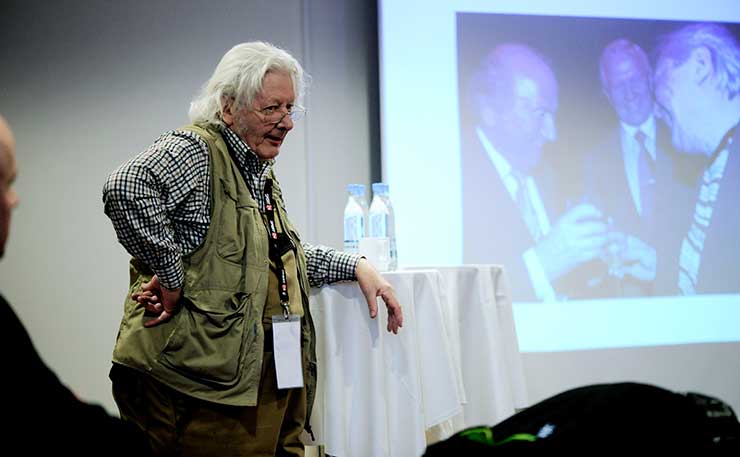
Bearing in mind that the unconscious responds to feelings, simply cloaking information in a feel of objectivity, impartiality and authority is enough to seduce the human information processing stream. As far as the unconscious is concerned, if it looks and sounds and feels like a fact, it probably is a fact.
In a chapter of the book Military Life: The Psychology of Serving in Peace and Combat, Steven Collins traces the history of psychological operations in the US. He describes the wartime use of radio, TV and newspapers in foreign countries as a means to “influence emotion, motives, objective reasoning, and ultimately… behaviour.”
In one example, in 2003 a US psy-ops radio station in Iraq ran news coverage that was both favourable and unfavourable to Saddam Hussein. The coverage was initially mostly favourable to Hussein, and gradually became less favourable over time, with the hope that this would be deemed “more credible” by Iraqi listeners.
Collins says that rather than “tell the really big lie”, psy-ops works best “in the grey areas where truth and lies coexist”.
Grey areas, for instance, in which you run manufactured criticism of a political party in the lead up to an election, to ‘manage perceptions’ such that unequal policies appear neck-and-neck.
In a fascinating, if disturbing, article on the current state of psy-ops in the US, Professor of Conflict Studies, Stephen Badsey, a world expert in war and the media, says that “psy-ops and public affairs have effectively fused”. He notes, “The long argument as to whether a firewall should be maintained between psy-ops and information activities and public affairs has now largely ended, and in my view the wrong side won.”
On a related topic, long-time investigative reporter Robert Parry has written a thorough history of domestic propaganda in the US, titled The Victory of Perception Management. Parry says, “Reagan’s creation of a domestic propaganda bureaucracy… continue[s]to reverberate today in how the perceptions of the American people are now routinely managed.
Parry was awarded the Medal for Journalistic Independence by Harvard University’s Nieman Foundation in 2015.
I am not arguing that the ABC is a branch of STRATCOM. I am simply arguing that communication architectures and their functions share similarities across mainstream media and ‘perception management’ spheres.
Another opinion-shaping aspect of the ‘balance’ model stems from public feelings towards news organisations themselves.
The ‘perception management’ apparatus of the US government, for instance, uses organisations and agencies with names that imply independence, integrity and trustworthiness, such as the ‘National Endowment for Democracy’, the ‘Office of Public Diplomacy’, or ‘Freedom House’.
In the Iraqi radio example above, the radio station was falsely depicted as a local Iraqi-run station, in order to elicit listeners’ trust. Again, to the unconscious mind, if it looks, sounds and feels trustworthy, it probably is.
This is an area in which trusted organisations such as the ABC hold special power to shape opinion. In the grey areas where truth and lies coexist, lies and half-truths aired by trusted organisations such as the ABC are particularly likely to be taken as fact.
In one clear example of domestic propaganda, the corporate information war against climate science, the ABC played an active and trust-building role. A role that is coming home to roost this election time.
ABC and climate coverage
Around the time of the NBN expose, Jeff Sparrow wrote an article in Eureka Street about political pressures on the ABC to go to extreme lengths of journalistic ‘balance’. Against a history of attacks from conservative politicians, funding cuts, and threats of more funding cuts, Sparrow says that the ABC was like “the victim in an abusive relationship, desperately trying to ward off the next blow by anticipating the criticism of its enemies”.
Sparrow says that airing an opposite view for every view expressed was the ABC’s main defense against political attacks.
In this context, after vocal climate skeptic Maurice Newman became ABC chairperson, the ABC began airing climate denialist content. In 2007 it broadcast The Great Global Warming Swindle, a documentary discounting anthropogenic causes of global warming.
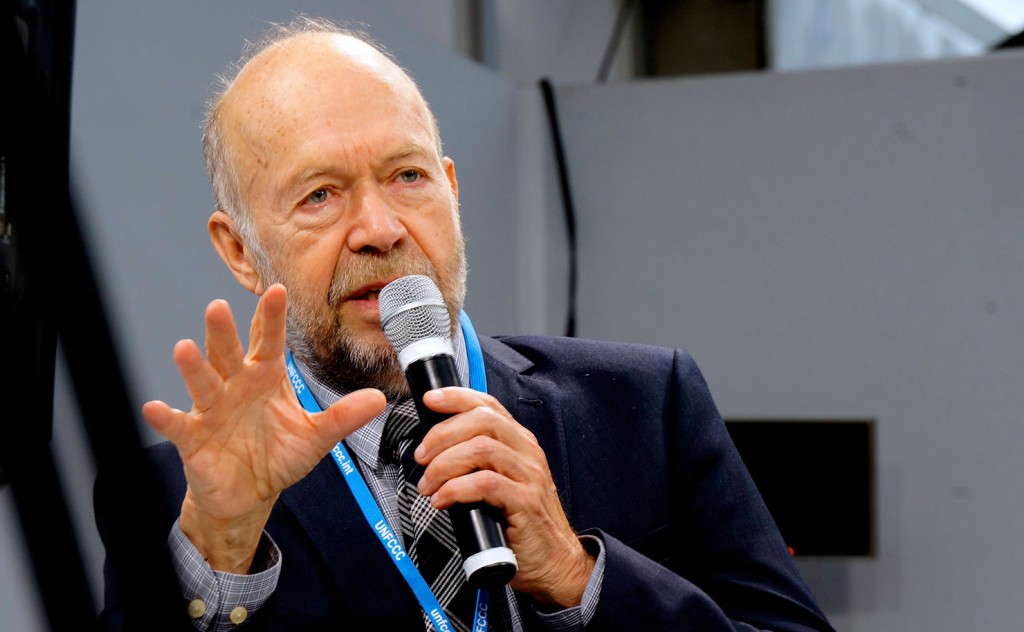
In 2010, when climate scientist James Hansen and climate denialist Christopher Monckton came to Australia, Hansen received scant attention from the ABC, with the exception of two radio interviews, including one on Late Night Live. In contrast, “Monckton received saturation coverage… and was always treated as an authoritative source until the Media Watch report near the end of his tour.”
Sparrow notes, “The ABC gave huge publicity to a man that most reputable scientists regard as a crank, even as it largely ignored one of the more influential scientists of our time [James Hansen].”
This can’t have been an honest mistake. In 2010, James Hansen had been an influential scientist for over 20 years. And, as Marc Hudson explains in The Conversation, the Office of National Assessment had urged the Fraser Government to consider moving away from fossil fuels as early as 1981, based on science.
By 2010, climate science had long since moved from uncertain to accepted, in both Australia and the US.
The ABC climate denial coverage was, of course, part of a wider industry funded misinformation campaign conducted around the world, which is now well-documented.
The crux of the campaign was to take something simple – anthropogenic global warming is happening – and make it complex and confusing – the science is uncertain, controversial and impossible to understand.
As MIT Media Professor Sut Jhally explains, this is yet another propaganda technique. Jhally, who is also executive producer of the documentary The Occupation of the American Mind, discusses manufactured complexity with respect to US coverage of the Israel-Palestine conflict.
Jhally says of the Israeli public relations campaign, “In the United States… the Israeli Palestinian conflict is often presented as an intensely complicated and confusing conflict… In fact…[it]is one of the clearest and least complicated of contemporary geopolitical conflicts. It’s actually really easy to understand… [But to elicit public support] you have to take what is clear and make it confusing.”
Manufacturing complexity and confusion is a psychologically effective strategy. As well as heightening suggestibility, framing an issue as complex elicits citizen disengagement and a willingness to trust leaders to sort things out.
That is no doubt partly why so many voters trust the Coalition, despite its antagonism to life on Earth, to handle our climate emergency.
The fact the ABC conducted corporate misinformation to avoid political attack doesn’t make things any better. It makes them worse.
In Manufacturing Consent, Chomsky and Herman identify funding sources as the key driver of contemporary propaganda. The psychology of this is simple. Don’t bite the hand that feeds you.
Okay, harm done. But all that climate denialism is behind us now. The truth is out. Corporations and think-tanks are even under legal investigation for undermining climate science. People will open their eyes and move on, right?
Unfortunately not.
When associations in the brain are repeated over and over, they become ‘crystallised’ and resistant to change. A psychologist’s maxim is that ‘neurons that fire together wire together’. Once “climate science” and “unsettled” have fired together often enough, the association becomes difficult to break.
So what can be done? If decades of media manipulation have closed millions of minds to genuine information on climate change, what’s the use?
The ABC might have helped to get us into this mess, but will it help to get us out?
Given what’s at stake, will the ABC throw fear of funding cuts to the wind, ramp up its investigative reporting, dial down the fake objectivity, and stand up for humanity this election?
Or will it forge ahead with reporting-as-usual, politics-as-usual, and business-as-usual, like its bosses and our leaders expect?
In their book Climate Change, Capitalism and Corporations, Sydney University Professors Christopher Wright and Daniel Nyberg identify a ‘business-as-usual’ narrative at the heart of corporate responses to climate change. Wright and Nyberg studied Australian corporations’ engagement with global warming, and found that the overarching corporate strategy was to “frame business and markets as the only means of dealing with the climate crisis” in order to enable “industry to make money from it.”
The success of the corporate business-as-usual message, they argue, is central to humanity’s inability “to muster a meaningful response to the crisis that is engulfing it.”
Will the ABC walk the corporate business-as-usual walk this election along with the Government, as voters sleepwalk alongside, or will it reconnect with its “democratic role as public watchdog” and stand up?
Let’s be realistic. The ABC needs funding to survive. As does independent media.
The easiest and most powerful remedy for media hegemony and the occupation of the Australian mind is to support independent media, the home of watchdog journalism.
But what else can we do?
In part three I will explore approaches to circumventing the occupation of the Australian mind, and saving voters from their self-destructive impulses, based on the psychology of cognition and voting, strategic communication and lessons from the US presidential primaries.
Donate To New Matilda
New Matilda is a small, independent media outlet. We survive through reader contributions, and never losing a lawsuit. If you got something from this article, giving something back helps us to continue speaking truth to power. Every little bit counts.


